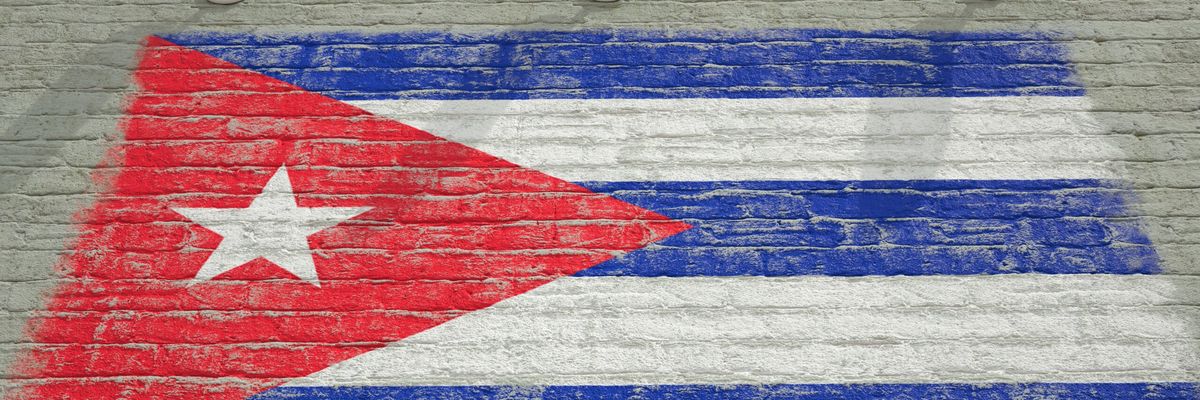In the repertoire of foreign policy combatants in Washington’s corridors of power, there is a time-tested ploy: Conservatives in the military or intelligence bureaucracy leak damaging information to force the (usually Democratic) president into a more confrontational approach with a foreign adversary, derailing any effort to reduce tensions. The bureaucrats’ allies on Capitol Hill immediately charge the president with being “soft on” whomever and demand tougher action. Too often it works.
The latest chapter in this saga is the “revelation,” on the eve of Secretary of State Antony Blinken’s trip to Beijing, that China is allegedly building a “spy base” and negotiating for a “military training facility” in Cuba. The leaks had all the hallmarks of a concerted campaign. The Wall Street Journal was given the scoops, which came in quick succession, thus keeping the story in the headlines for several days. Other media outlets had no trouble immediately confirming the stories, also from (the same?) anonymous sources. Denials by both the Chinese and Cuban governments received only passing mention in most reports.
As more and more details emerged, however, the facts proved to be more complicated — and less dramatic — than the original claims. As Mark Twain reputedly said, “A lie can travel halfway around the world while the truth is still putting on its shoes.”
The “spy base,” it turns out, isn’t a base at all, but an installation of several radar antennae that Reuters reporters were able to approach and photograph unmolested by any security. Local residents said they had not seen any Chinese about. Moreover, the installation has been there since at least 2016 when Senator Marco Rubio first complained about it. So whatever it is, it’s not new and not the dire security threat implied by calling it a Chinese “base.”
The training facility, the Wall Street Journal headlined, would put “Chinese Troops on America’s Doorstep,” as if they might invade Florida from their Cuban beachhead. But no such facility exists yet. Secretary Blinken indicated that the administration had already expressed to Chinese officials Washington’s “deep concerns about PRC intelligence or military activities in Cuba.”
Congressional Republicans pounced on the WSJ stories as proof that Biden’s efforts to defuse rising tensions with China are misguided. “We’re in a new cold war,” declared Rep. Mike Waltz (R-Fla.), chair of the House Intelligence Committee, calling for Blinken to cancel his scheduled trip. “The aggression of China continues,” complained Sen. Josh Hawley (R-Mo.), while Blinken is “flying over to China… to grovel to Beijing.”
In a joint statement, Sen. Marco Rubio (R-Fla.) and Sen. Mark Warner (D-Va.), cochairs of the Senate Intelligence Committee, declared, “The United States must respond to China’s ongoing and brazen attacks on our nation’s security,” and that it was “unacceptable for China to establish an intelligence facility within 100 miles of Florida.” The irony of their statement escaped them, coming as it did just days after U.S. complaints about China’s harassment of a U.S. spy plane flying a only a few miles off China’s coast. The U.S. flights were perfectly legal under international law—as would be a Cuban and Chinese intelligence-gathering facility 100 miles from Florida.
This is not the first time Cuba has been caught up in such machinations by battling factions in Washington’s foreign policy establishment. The Chinese “spy base” and “training facility” brouhaha was reminiscent of two incidents that derailed President Jimmy Carter’s attempts to deepen détente with the Soviet Union and normalize relations with Cuba.
First came the “nuclear-capable” MiGs. In early 1978, the Soviet Union provided Cuba with MiG-23 fighters, which in some configurations were capable of delivering nuclear weapons. When the news was leaked by “intelligence sources who declined to be named,” Republicans declared the MiGs a violation of the agreement that ended the 1962 missile crisis and called on Carter to demand their removal. As it turned out, the Cuban MiGs were not nuclear-capable after all, but to demonstrate his toughness, Carter resumed SR-71 reconnaissance flights over Cuba, previously suspended as part of his opening to Havana. The controversy and the spy flights raised tensions with both Havana and Moscow, and the flights led directly to the second faux crisis, the “Soviet combat brigade.”
A year later, with the Strategic Arms Limitation Treaty (SALT) facing an uphill battle for Senate ratification, an SR-71 flight identified Soviet troops on maneuvers in Cuba. An intelligence analyst dubbed them a “combat brigade,” despite a dearth of evidence as to their function, and the intelligence report leaked almost immediately to Aviation Week magazine. The news made national headlines when the chairman of the Senate Foreign Relations Committee, Sen. Frank Church (D-Idaho), facing a tough re-election fight (which he lost), held a press conference to demand the brigade be withdrawn.
Republicans denounced the brigade as yet another Soviet provocation akin to the 1962 missile crisis, despite the unit’s inability to pose any threat to the United States. The brigade’s link to the missile crisis proved far different. The Soviet troops, it turned out, were not new at all. They had been in Cuba since 1962, left in place as Nikita Khrushchev’s reassurance to Fidel Castro that despite withdrawing the missiles, the Soviet Union remained committed to Cuba’s defense. Not surprisingly, Moscow refused to accede to U.S. demands that the troops be withdrawn, Carter had to back down from declaring the brigade unacceptable, and the SALT agreement died in the Senate.
Fortunately, the Biden administration did not let the “spy base” and “training facility” ploys derail Blinken’s trip to Beijing, especially after postponing it once because of the Chinese spy balloon. U.S. relations with Russia have already descended into a new cold war as a consequence of Vladimir Putin’s invasion of Ukraine. Relations with Beijing are teetering on the edge of a new cold war in Asia, which would serve the interests of neither China nor the United States. Nevertheless, the diplomatic volleys touched off by these leaks have left a residue of ill will, making the Biden administration even more reluctant to pursue any relaxation of relations with Havana.
Cubans, once again, are collateral damage in battles between the superpowers and partisan wars along the Potomac.
















